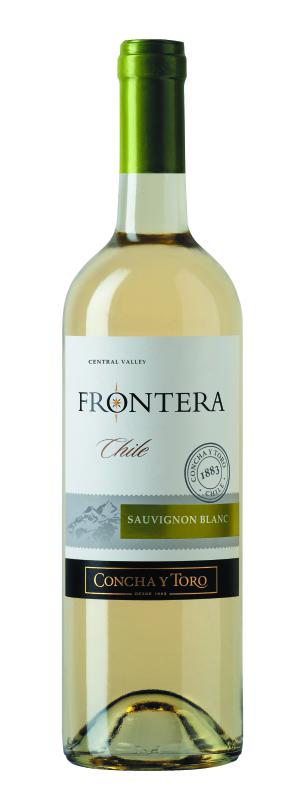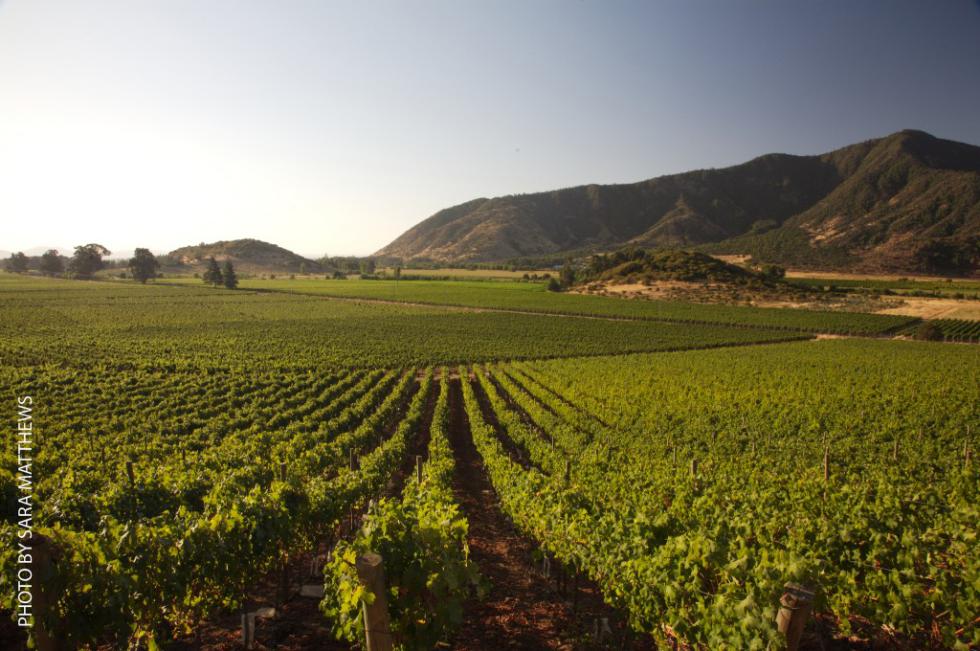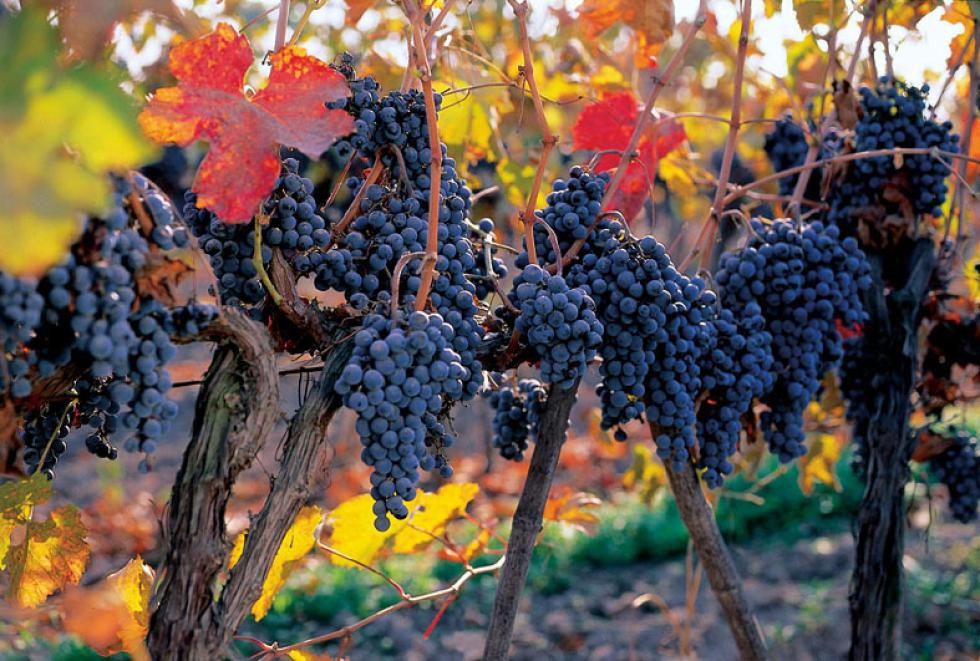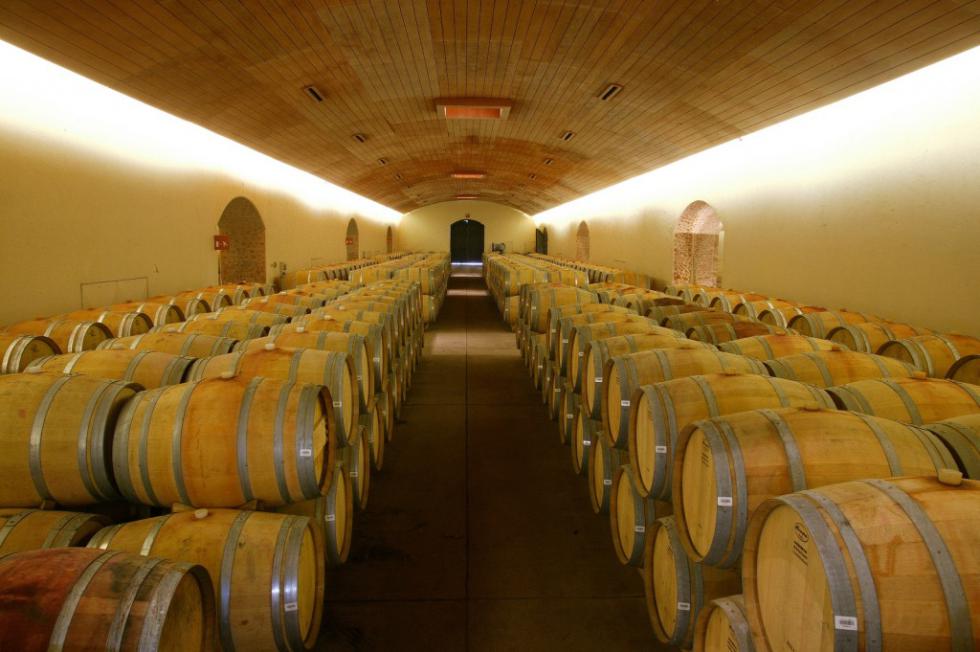I don’t often write about what some would derisively call “industrial wine,” but Frontera, the big-batch line from Concha y Toro, is an exception.
However, I’m not going to extol the fine qualities of this very drinkable Sauvignon Blanc, but rather suggest that it is excellent on hot summer evenings not only for a second chilled bottle, but also as the base wine for spritzers.
It’s been my experience with spritzers that when an inexpensive wine is combined with seltzer and a squeeze of lemon or lime, the flavor of the wine is unpleasantly altered, often developing metallic or sour tastes. That’s not the case with Frontera. The Sauvignon Blanc’s flavor comes through and is nicely balanced with the citrus.
The ubiquitous Concha y Toro, one of the world’s largest wine companies, also produces such fine high-end wines as Don Melchor and has a partnership in a French winery with Baron Philippe de Rothschild.
Founded in 1883, Concha y Toro had sales of more than $1 billion last year and is the world’s second largest vineyard owner with operations in 145 countries. Scale can’t guarantee that a company produces good wine, but Concha y Toro does. The company even has a stated goal to increase profits by “offering outstanding quality across our portfolio,” according to the wine producer’s website.
That means the inexpensive wines are given the same attention to detail as the fancy stuff. They just don’t age it as long or tweak it as much, and they produce a whole lot more of it.
The company also gains points on environmental and social fronts. Concha y Toro has had a long-term commitment to sustainable development and uses lightweight bottles to reduce its carbon footprint, water consumption and the consumption of glass. The wine producer also invests in the future of its 3,500 employees and their families by providing scholarships and educational opportunities.
Last December, Concha y Toro opened a Center for Research and Innovation in Chile’s Maipo Valley to support viniculture research for the entire Chilean wine industry.
The company’s efforts seem to be paying off: Sales of its brands had double-digit increases last year, with an 18 percent jump in the U.S. and Canada.
In addition to its high-end wines, Concha y Toro also produces some very fine mid-priced wines — $10 to $25 — including the Casillero del Diablo line. And then there are what the company calls its Varietal Brands, including Frontera and Frontera Pais, a recent line of wines produced from vines with lineages that stretch back to the conquistadors, who brought them from Spain during the 16th and early 17th centuries. The grapes are raised in a traditional manner by indigenous farmers in small vineyards without trellises or irrigation. The varietals include Pais (also called Mission), Criolla, and Negra, Pedro Jimenez and Carmenere. I haven’t seen these wines on the shelves yet, but judging by Concha y Toro’s rapid growth, it shouldn’t take long.
Frontera hand picks the grapes for the Sauvignon Blanc in March, and lets the juice age in stainless steel tanks for two months. The result is a bright greenish-yellow wine with fresh citrus aroma and taste. It’s not as citrusy as New Zealand Sauvignon Blanc, but there is enough flavor to hold up beautifully, either by itself or in a light spritzer.
Although the maker of this Sauvignon Blanc recommends the wine be chilled to between 46 and 50 degrees, on a hot muggy evening, I drink most white wines chilled to about 37 degrees.
I like the flavor of this wine, so I make a simple, refreshing spritzer by pouring 5 ounces of Frontera Sauvignon Blanc in a Burgundy glass filled with crushed ice, and top it with chilled, unflavored seltzer. I add a wedge of lime and a sprig of mint.
There are, of course, numerous spritzer recipes available, and Frontera Sauvignon Blanc and the other wines in the Frontera line, particularly the Cabernet Sauvignon, work well. The Sauvignon Blanc is 12.5 percent alcohol, so using it in a spritzer makes good wine go further and lengthy gatherings more sustainable.
Frontera Sauvignon Blanc goes well with light meals such as shellfish, grilled fish with a light beurre blanc or lemon caper sauce and with entree salads.
I’ve found the large bottles of Frontera for as little as $8.99. It is widely available in the Pioneer Valley.
Field Notes
∎ In a recent column about Griveliere Cotes du Rhone, a reader and Medieval French teacher pointed out that the change of the spelling of region’s name from Costes du Rhone to Cotes du Rhone, had nothing to do with wine or even inebriated lexicographers. It came about during the late 18th century codification of the French language when some very sober grammarians removed the first “s” and inserted a circumflex over the “o,” a mark resembling a little pointed hat.
It sounds a bit complicated and just one more good reason to relax and have a glass of wine.
Cheers!•
Suggestions for wines in the $10 range are always appreciated.
Warren Johnston can be reached at warren.nelson.johnston@gmail.com.







